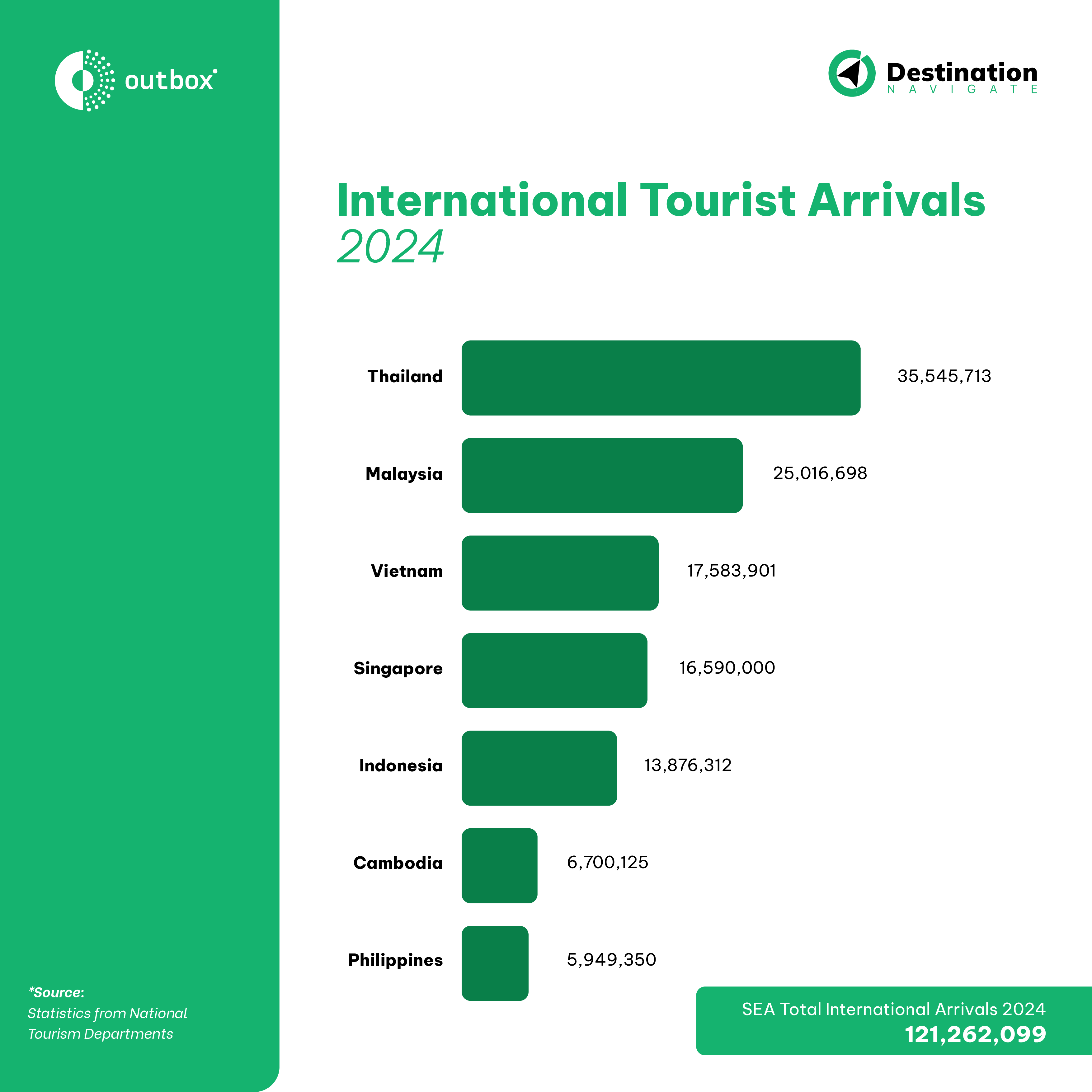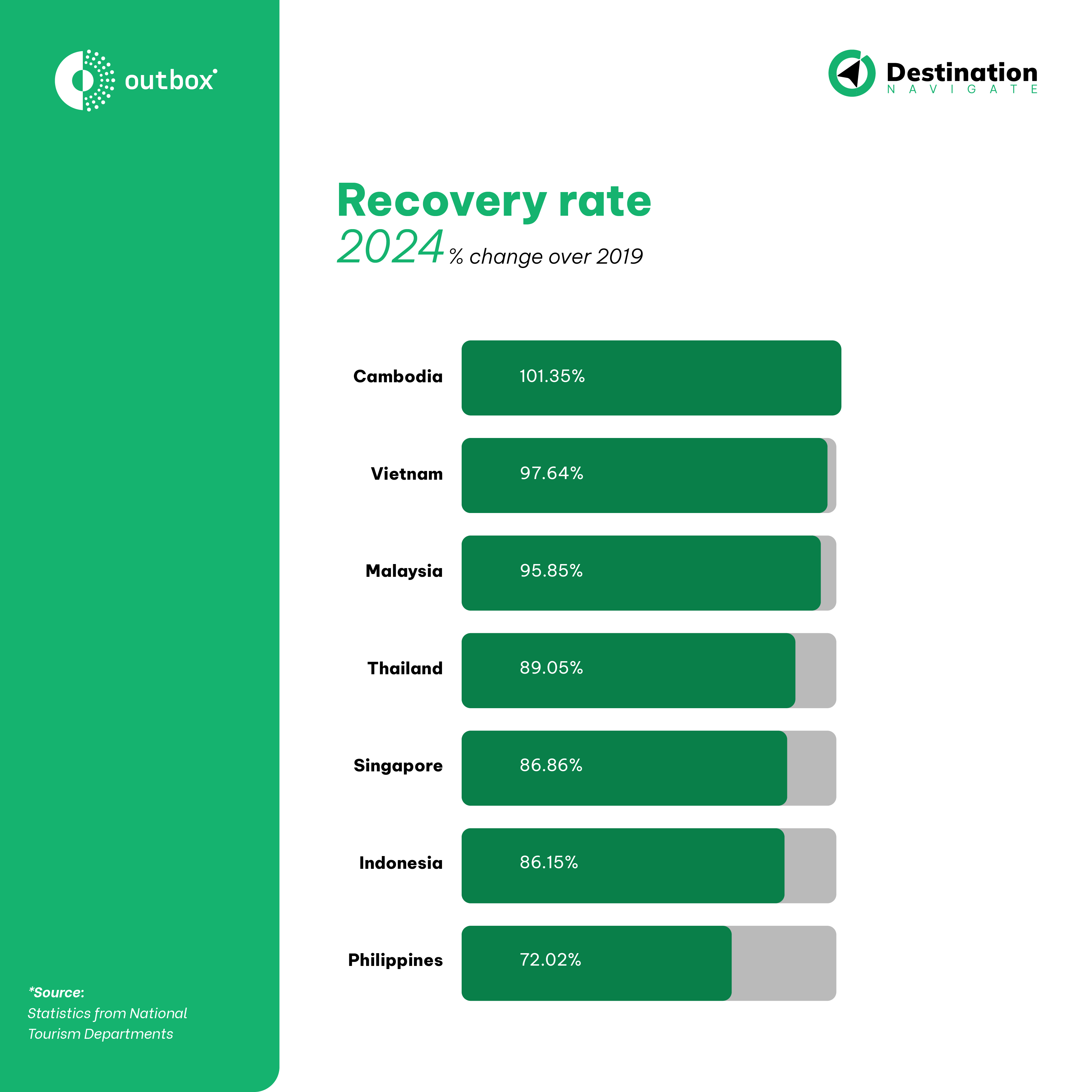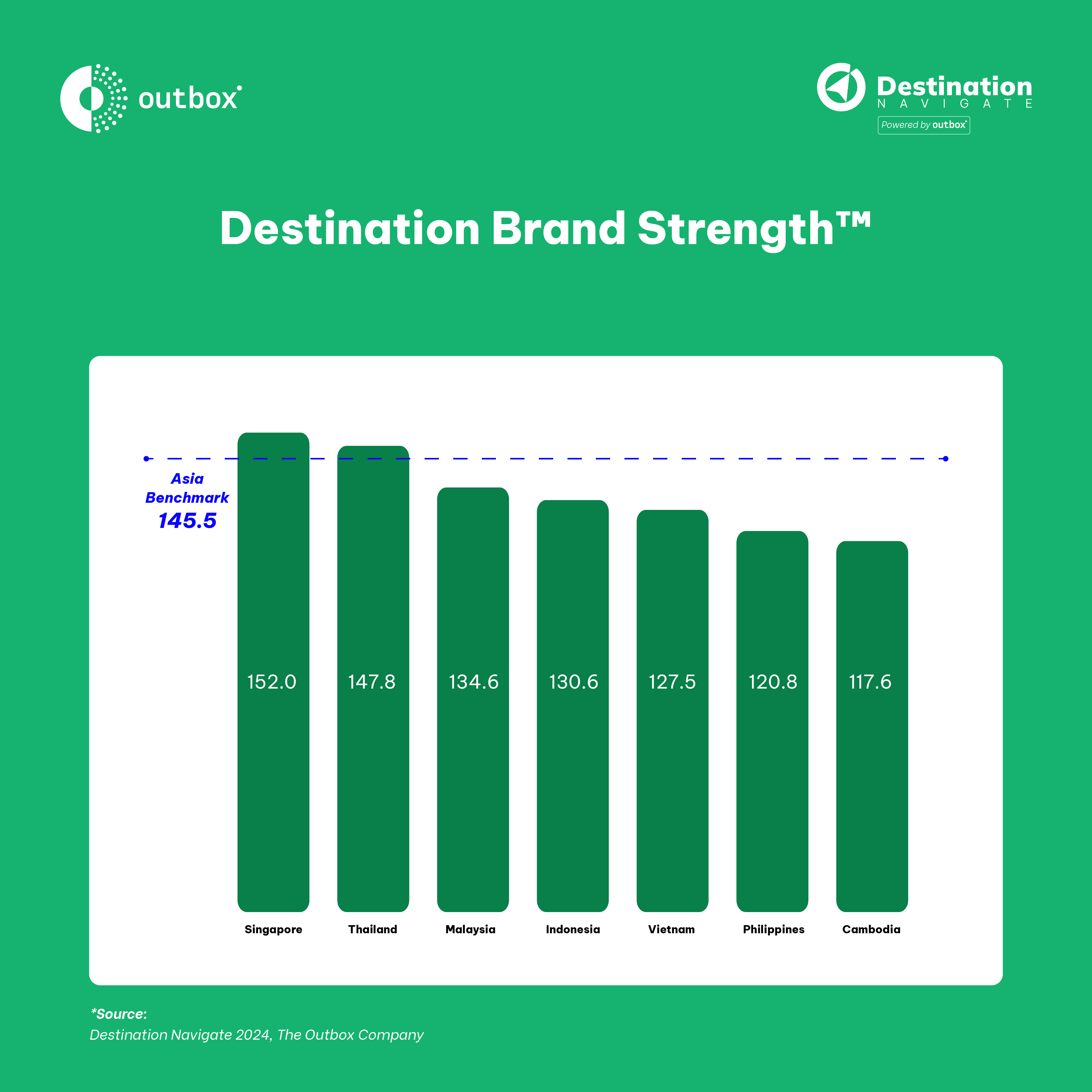Southeast Asia’s tourism industry saw a remarkable recovery in 2024, with a significant increase in international arrivals across destinations. This blog analyzes three critical aspects of the region’s tourism performance: total international tourist arrivals, recovery rates compared to pre-pandemic levels, and the Destination Brand Strength™ (DBS) index.
International Tourist Arrivals 2024: A Year of Strong Rebound
The year 2024 marked a strong resurgence for Southeast Asia’s tourism sector, with major destinations not only experiencing a surge in international arrivals but also demonstrating impressive year-over-year growth. Thailand remained the top destination, welcoming 35.5 million international visitors, reinforcing its position as the regional leader. Malaysia followed with 25.0 million, securing second place, while Vietnam continued its growth trajectory, attracting 17.6 million international tourists.
Singapore recorded 16.6 million visitors, reflecting its strong appeal as a business and leisure hub. Indonesia welcomed 13.9 million, while Cambodia and the Philippines reported 6.7 million and 5.9 million arrivals, respectively. In 2024, Southeast Asia welcomed a total of 121.3 million international arrivals, highlighting the region’s robust tourism recovery.
Vietnam led the region in year-over-year (YoY) growth, achieving a remarkable 39.5% increase in arrivals in 2024 compared to 2023. This impressive growth allowed Vietnam to surpass Singapore and secure third place in total arrivals. Following Vietnam, Thailand experienced a growth rate of 28.1% and Malaysia saw an increase of 24.2%. Cambodia recorded a growth of 22.9%, while Singapore’s arrivals increased by 21.9%, and Indonesia saw a growth of 19.6%. The Philippines, on the other hand, had a more modest increase of 9.2%. Notably, although Vietnam had a lower total number of arrivals compared to some other markets, its growth rate outpaced all others, highlighting its accelerating momentum in regional tourism.
Recovery Rate 2024: Back to Pre-Pandemic Levels
As international arrivals recover, an essential metric to consider is the recovery rate, measured as the percentage of 2024 arrivals compared to pre-pandemic 2019 levels. Cambodia led the region, surpassing full recovery with a 101.35% recovery rate, suggesting an influx of travelers beyond pre-pandemic levels. Vietnam followed closely at 97.64%, demonstrating its resilience and attractiveness post-pandemic.
Malaysia’s recovery stood at 95.85%, further solidifying its position as a top-performing market. Thailand, despite leading in absolute arrivals, recovered 89.05% of its 2019 figures, indicating room for further growth. Singapore (86.86%) and Indonesia (86.15%) showed strong rebounds, while the Philippines lagged at 72.02%, reflecting challenges in reaching pre-pandemic visitor numbers.



Destination Brand Strength™ (DBS): Measuring the Competitive Edge of Southeast Asia’s Destinations
Beyond arrival numbers, Destination Brand Strength™ (DBS) provides insights into how destinations are perceived and positioned in Asian travelers’ minds. When compared to the Asia Benchmark score of 145.5, only Singapore and Thailand exceeded this regional benchmark. This suggests that while other Southeast Asian destinations have shown impressive recovery, their brand strength still has room for improvement in the broader Asian market.
Singapore and Thailand led the region with DBS scores of 152.0 and 147.8, respectively, underscoring their strong brand presence above the regional benchmark. Malaysia (134.6), Indonesia (130.6), Vietnam (127.5), and the Philippines (120.8) formed the second tier, showcasing stable but relatively lower brand strength. Cambodia, despite achieving the highest recovery rate, had the lowest DBS score at 117.6, suggesting that while it has regained visitor numbers, its global brand perception may require further strengthening. The Destination Brand Strength™ index highlights the varying levels of brand competitiveness across the region and suggests that destinations below the benchmark must focus on enhancing their appeal to Asian travelers.
Looking Ahead: What’s Next?
The tourism performance of Southeast Asia in 2024 highlights a significant rebound across major destinations, although there are still differences in recovery rates and brand positioning. While some markets have already exceeded pre-pandemic levels, others are still working toward a complete recovery.
For more details about SEA Tourism Performance, access your account at #OutboxIntelligence. Sign up today!




